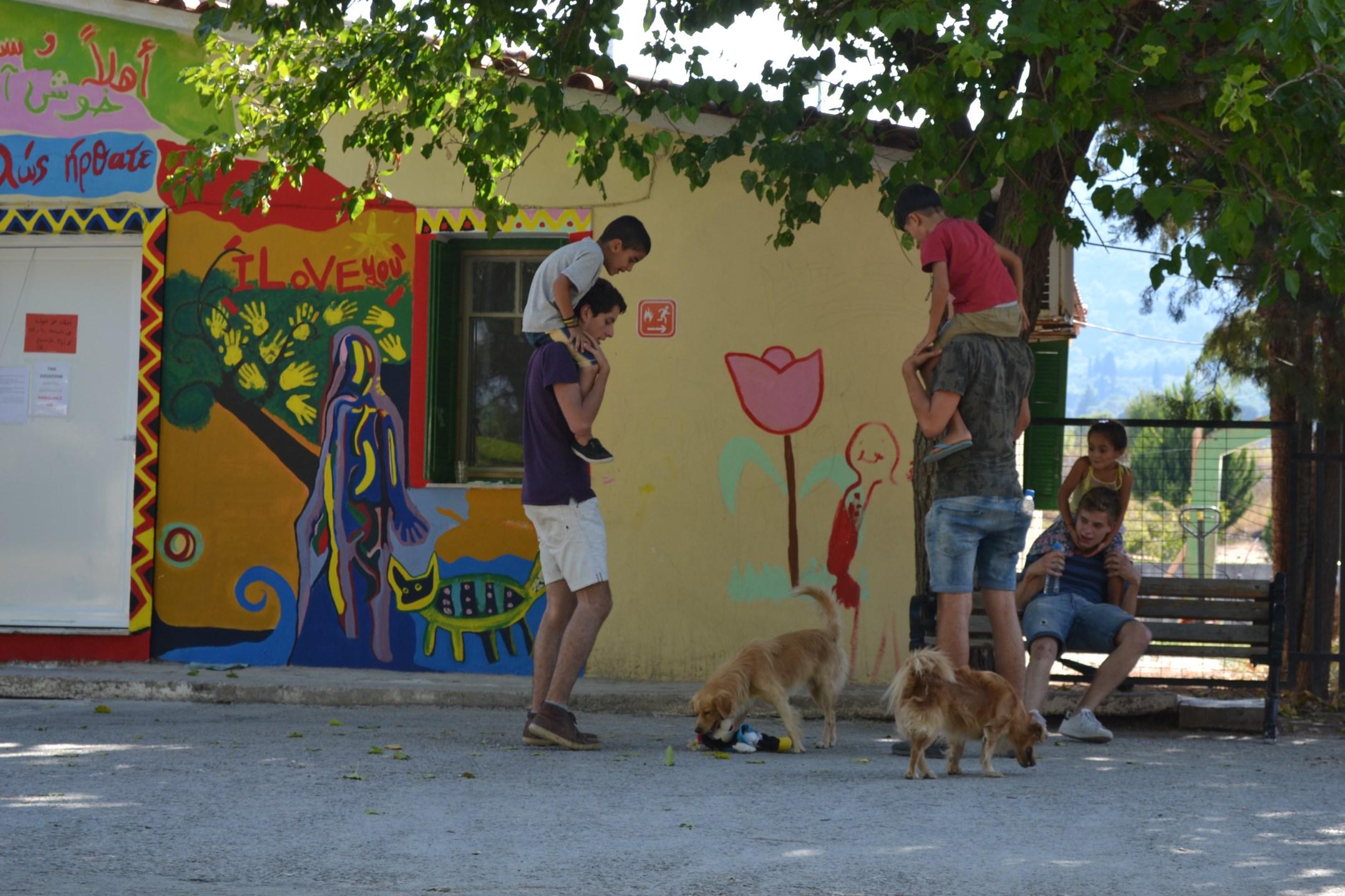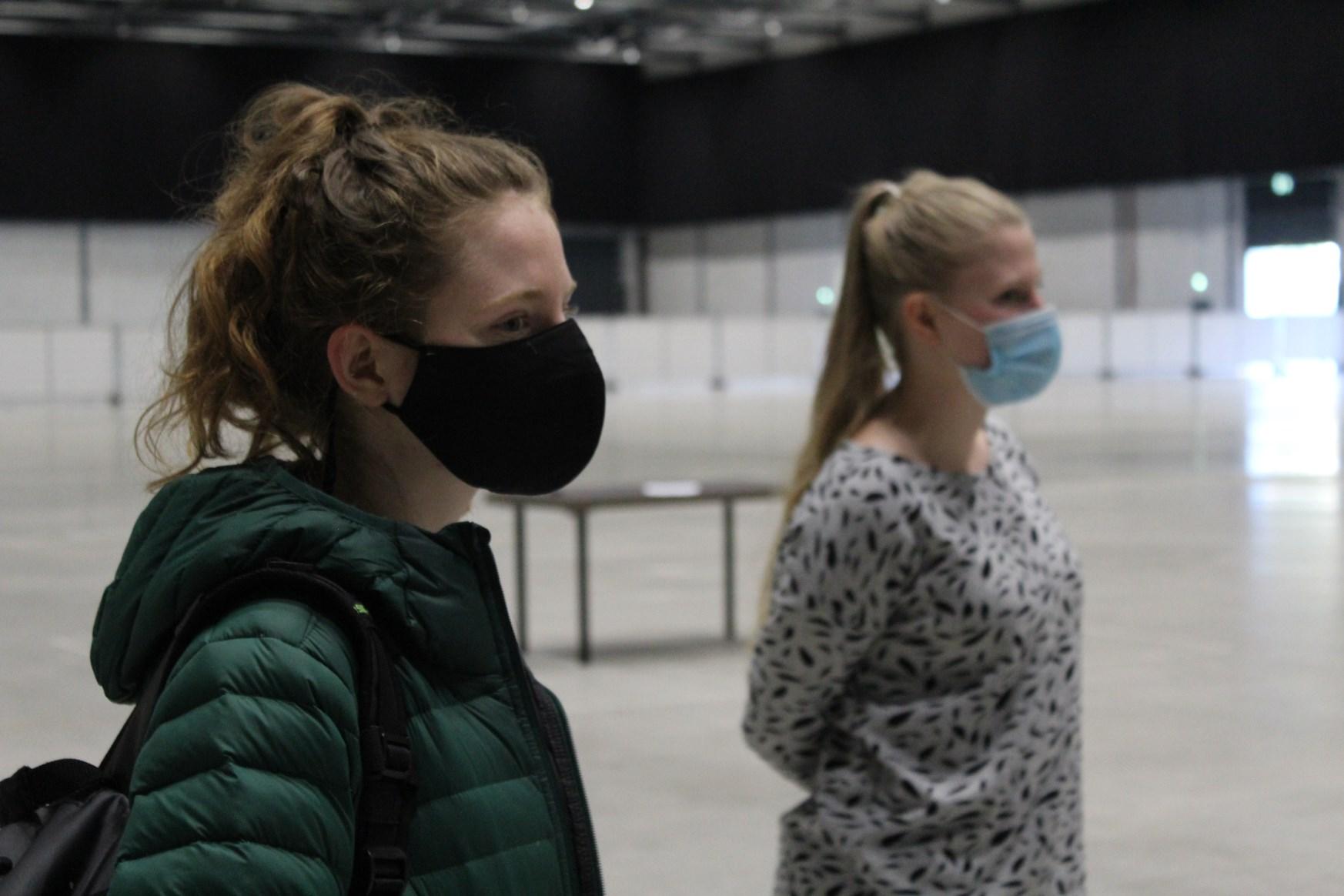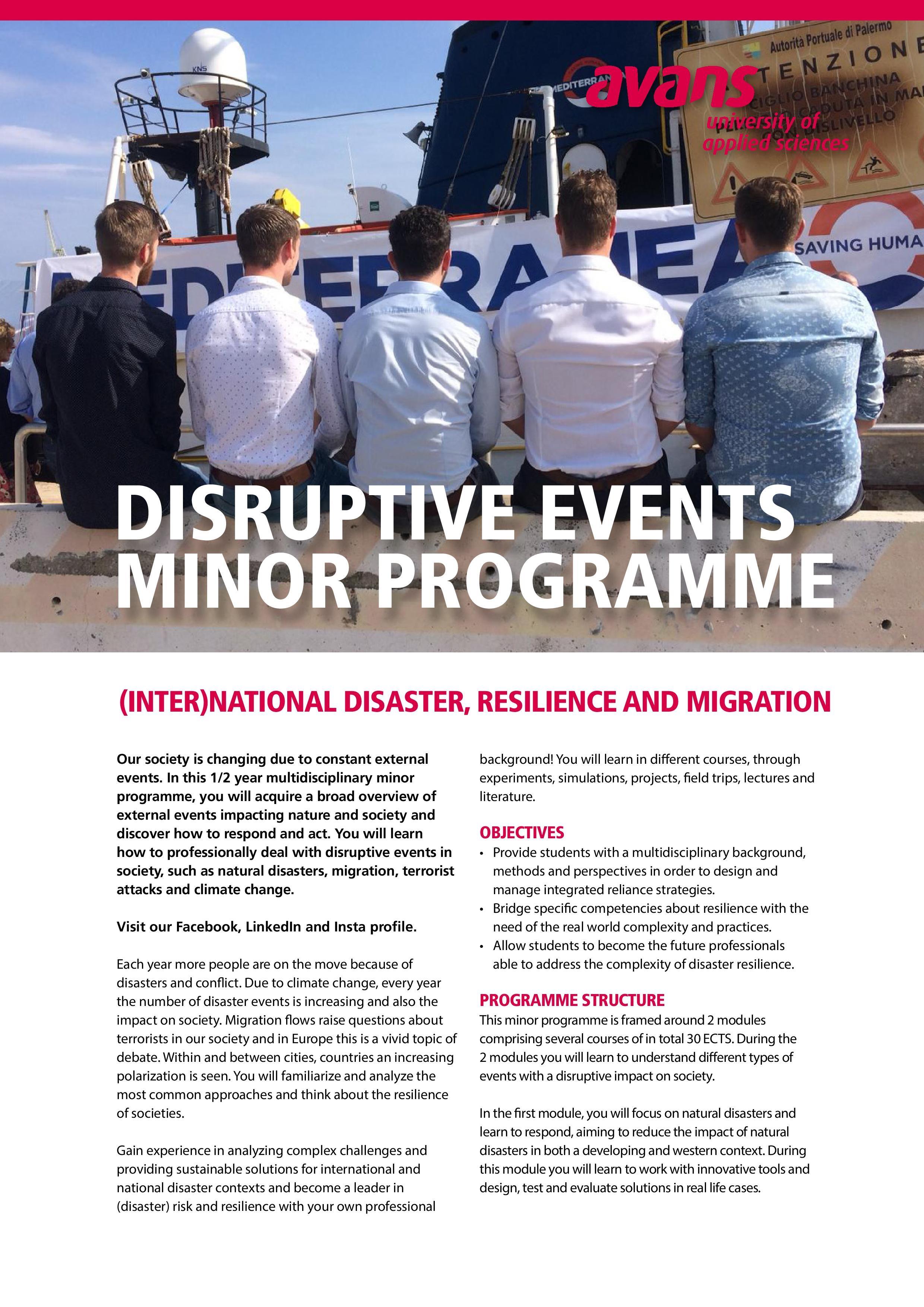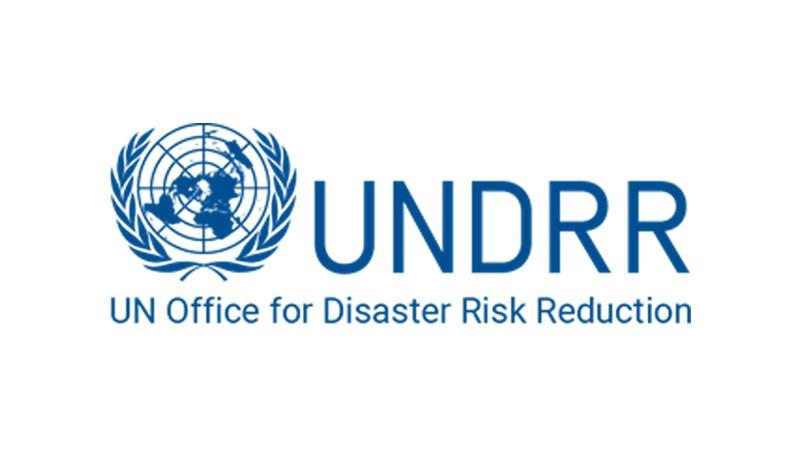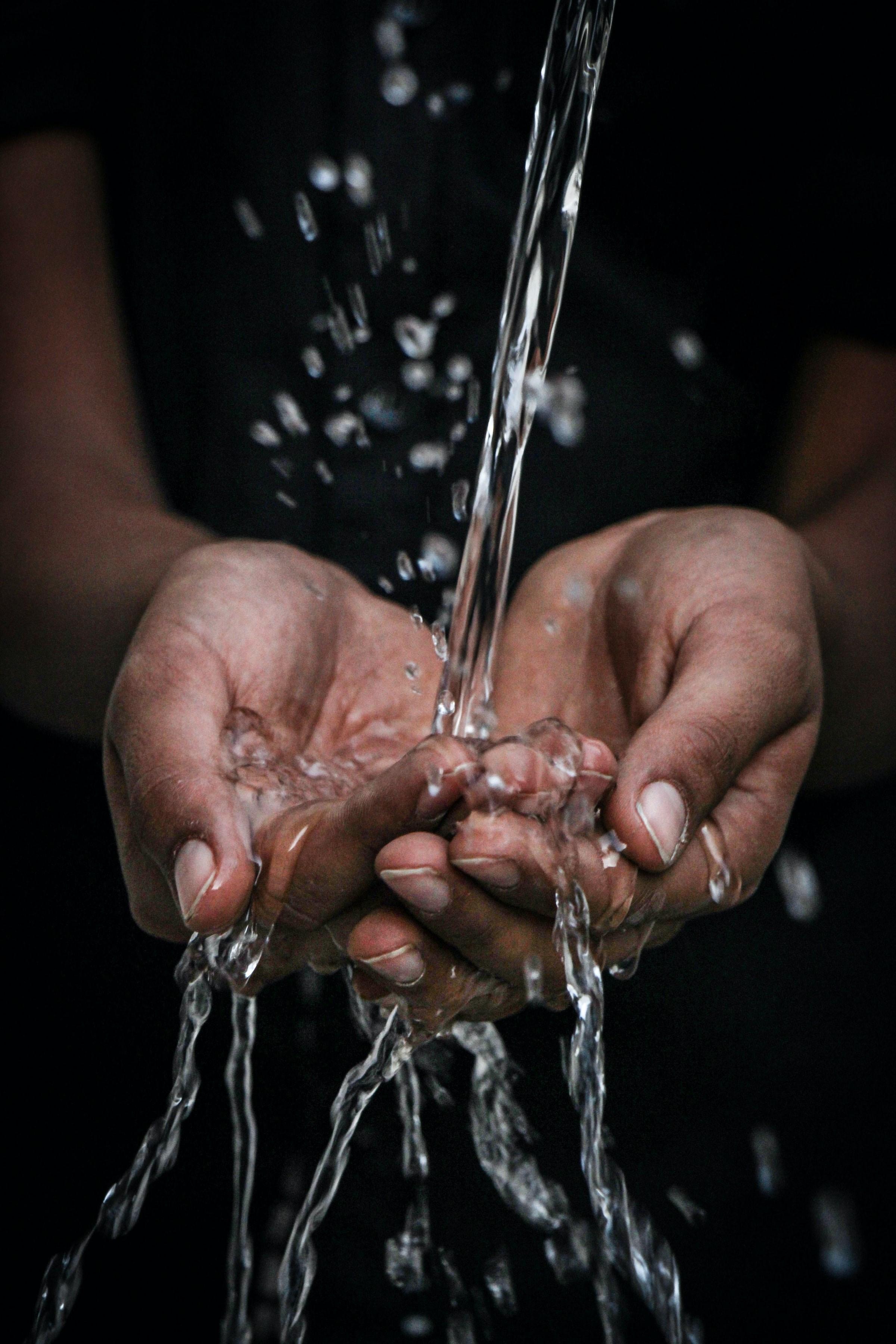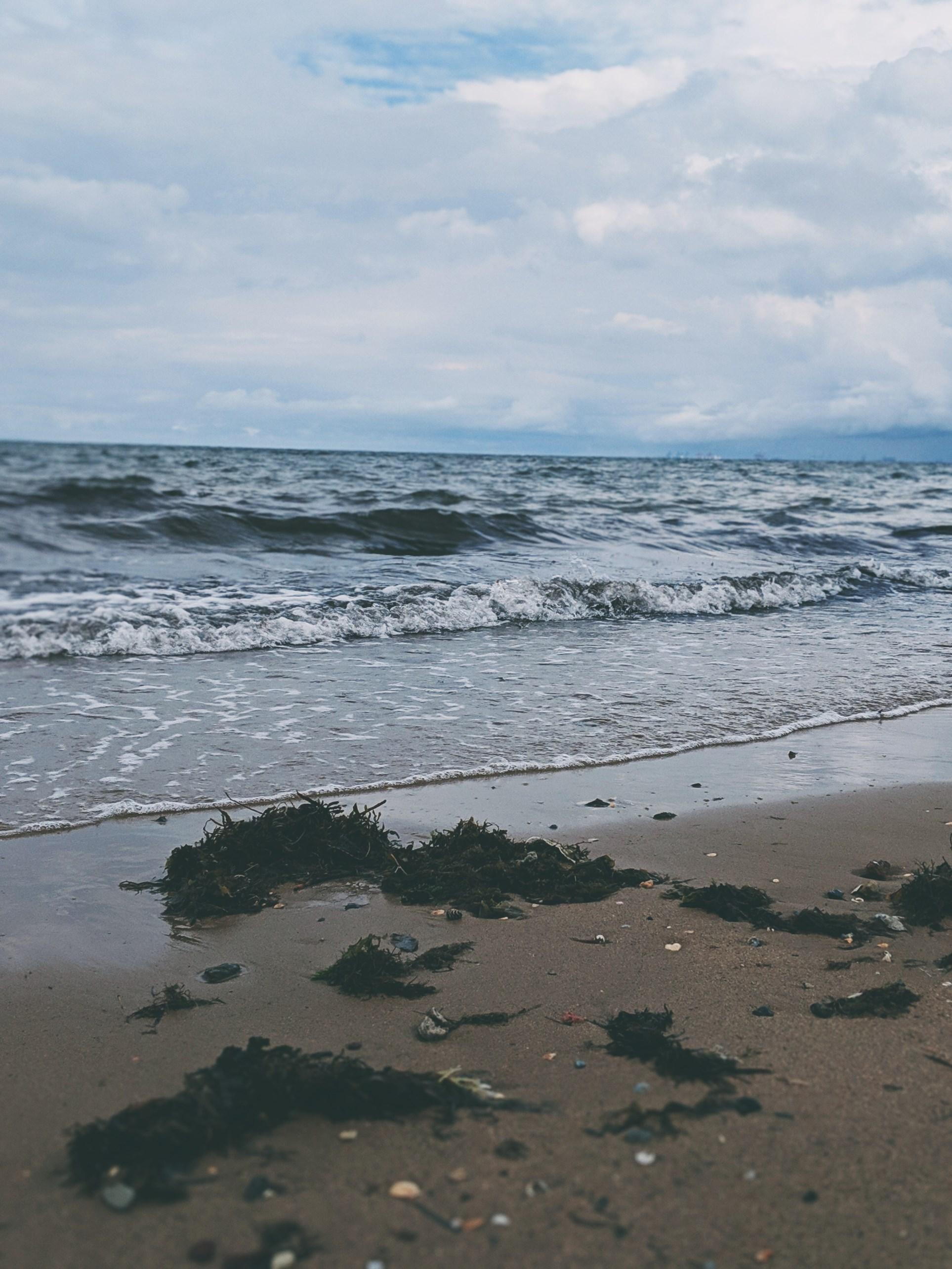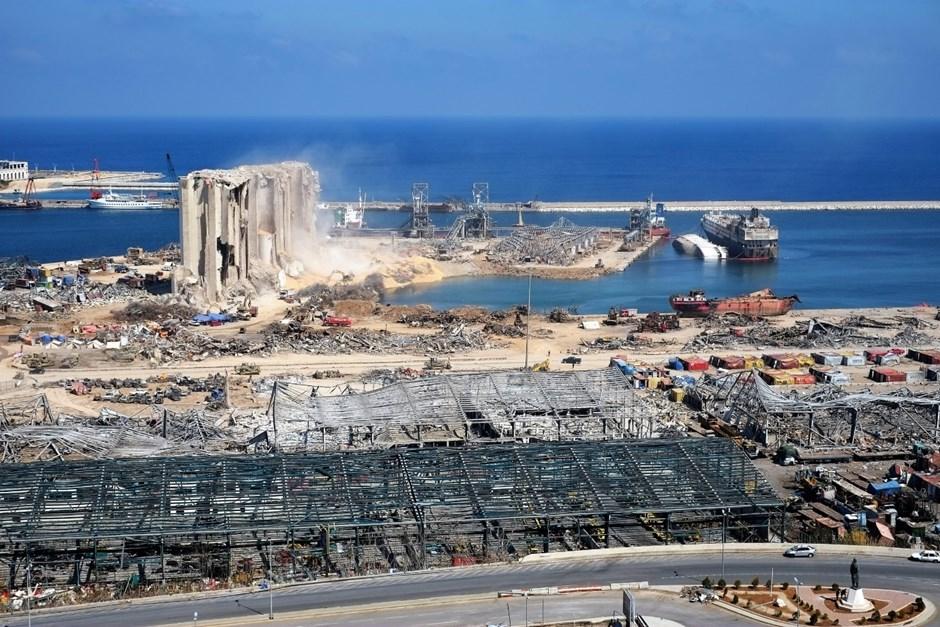
8 minute read
Content of the minor
In the minor Disruptive events, students made a lot of content for the different subjects. Most of the time groups were formed, which had to work on a project. The groups were very interesting, because most students have different study backgrounds and nationalities.
The first module
Advertisement
The first module was about disruptive events in general. During this module, there were several projects done by the students. For the subject System Thinking In Disaster Resilience And Recovery, groups of students searched for solutions for different problems. As an
example, one of the
groups did a study for water supply on Lombok. Besides the projects that are mentioned in this article, the students also followed some other courses. One of these courses was called climate change.
Water supply on Lombok
Due to pollution of the groundwater and the irregular raining moments, the habitants of the island Lombok do not always have the availability of clean drinking water. Last year, students did already provide a solution, the Warka Water Tower. However, this solution was not working that well. This year the students had to search for any useful changes to the design of this tower, or provide other solutions to provide drinking water. In the end, the students made a report and a video which shows the possible solutions. Other projects for this subject were about privacy in emergency shelters, build back safer and resilience for climate change adaptions. Different organisations provide these projects. Some of the organisation are VLOK Foundation, CORDAID and TU Delft.
Project Harbour of Rotterdam
For the subject Precasting Global Flood And Drought using ArcGIS, students dive into different cities in the Netherlands, which are located dangerously when it comes to waterrelated problems. One of the cities was Rotterdam. The harbour of Rotterdam is surrounded by different smaller cities and
important places. To precast the results of a sea-level rise of 2 meters, ArcGIS was used. The students made a map which shows all the places that will be flooded if the sea-level rises. The final product for this course
was presented in a Storymap. The picture
shows the areas (blue)
which will be underwater if the sea level rises 2 meters.

Serious Game: Disaster in my backyard
At the end of the first module, the students were invited to take part in an experiment. This experiment took place
at Breepark in Breda. During this
experiment,
the students had to work together in a team. The experiment was a simulation of a disaster. The groups had to react to this disaster and try to find the victims in and around a building. Due to the small amount of information during the briefing, the students had to gather information during the rescue actions. Because the access of aid kits was limited, the groups had to communicate with each other in order to get all the aid kits at the right place. Every movement and action was monitored and used for further investigation.

The second module
In the second module, the subjects stopped. The students have
made a choice out of the two different tracks, being the Climate track and the Migration track. Both tracks had different subjects and projects. Climate students mostly focussed on the National Park Loonse en Drunense Duinen.
Climate track
The climate track does not have any courses. Instead, there is one big project to work on. This project is in most cases located in the National Park Loonse en Drunense Duinen. There is one project about oak trees. These oak trees do not grow well there. To save them, students have to investigate the reason for this problem. Another project is about the influence of tourists on the national park. Mountain bikers, people who walk with their dog and other kinds of activities, have a certain impact on the dunes. The result in the future due to this tourism is investigated by the students. Another project of the climate track is about shifting dunes. The national park is famous for its large open areas which contribute to the effect called shifting dunes. It is the largest area in Europe where this occurs. Due to a large amount of nitrogen in the ground, the vegetation is changing. Normally it takes 100 years to have a forest out of a sandy area. Due to the amount of nitrogen, this process takes place here in 30 to 40 years. To prevent the sandy areas to become a forest, the
vegetation has to be removed.
Sheep and cranes are used to take measurements. To get an insight into the changes in the areas, students were asked to make a map of the national park which shows the areas of every habitat type. If this is done year after year, the volunteers in the area can get insight into the results of the measurements.

Migration track
The migration track has courses. Each course has its own deliverable. To give insight into the deliverables, some of them are mentioned below.
Migration path
The first deliverable is about a report. The report describes a migrant group and their path to migration and integrating into their new homeland. In this report, the case is approached in different ways. There is a sociological, economical, geographical way to take into account.

Infographic
For the course Trend Analysis In Resilience, an infographic is made about a trend. The Covid-19 virus did a lot to our
society. In the infographic,
students show a trend that is accelerating during this pandemic, for example, the advice to keep a distance from each other and wear a facemask. This trend could continue after the pandemic, in order to stay safe in the future.

Refugee camp
The initial purpose of this course was to
prepare you for the research trip to a refugee camp. Due to the Covid-19 virus, this trip is cancelled. The purpose of this trip was to gain insight into life in a refugee camp and the stories of the migrants. Hopefully, this will take place for you, when you join the minor.

Building intensive care units
For the course system thinking; disaster resilience and recovery (DRR) group 17 had the chance to visit the building of the new intensive care units at the Jeroen Bosch Hospital in ‘s-Hertogenbosch. Every group was assigned to investigate new idea’s that can assist people in disaster situations. But before we get there, something about the course DRR first.
System thinking
The lectures were given
by Eefje Hendriks, Pascal Bekkers and
Lisa Lensink. The first lessons during this
course were about system thinking. What is system thinking? While thinking about a system, if you do it right, you find out there are a lot of different individual parts interacting in a complex nonlinear way. A system consist always of 3 parts: a purpose, elements (parts) and interconnections. These interconnections between different elements result in an outcome, that does not necessarily have to be the purpose. The purpose is therefore a tricky one. Goals or sub-goals from
elements can result in an outcome that nobody wants. At this point system thinking is brought to life. System thinking is about finding out how different elements must act or function with other elements in order to get an outcome that fits the purpose of the system. This means looking at the bigger picture.
Learing about resilience
Besides our lectures on system thinking, we learned about resilience and how to be
resilient. Being resilient is having the ability to survive a crisis and thrive in a world of uncertainty.To be resilient a community has to able to do system thinking.
System thinking is important for understanding complex crises and what they mean for the specific community. Besides
system thinking, you have to
make sure a community can adapt and transform.If a community is able to change their behaviour and actions fast, there are more changes to
survive. And also sustainability is part of being resilient. The ideas that you use should not be used for only one scenario but should work in other communities as well, in future generations and in different ecosystems.
The project

With this knowledge and more we started our journey with real partners that have a
business or job that has something to do with a disruptive event. Group 17 had chosen to start working on an assignment from Wijnroemer Relief Goods (WRG). WRG is an organisation that offers a complete solution in emergency and humanitarian relief goods across the globe. They asked the
student group
to think about temporary emergency beds for hospitals during the Covid-19 situation. WRG already started working on a wall partition system that could be used for temporary units that could host corona patients. But this wall system did not fulfil all the demands of the hospital. You cannot imagine how much rules and regulations are bound to a simple hospital bed. In fact, there are several types of classes that tell the constructor exactly how to build a room/bed. Group 17 has had the privilege to see the construction of new Intensive care units at the Jeroen Bosch Hospital. This was only possible because the new beds/rooms were built on a location were the doctors and
nurses did not need to be. This gave the opportunity to see everything in great detail without being of any disturbance to hospital staff or patients. The exclusive tour gave a whole new dimension into understanding the complexity of helping people in dire need. Especially if you start to understand that one person needs a room
of
30 m2 where every part of the room is filled with something that cannot be missed. Only for the refreshment of the air was another floor needed just as big as the new IC-floor. With this information, we made a report on how to build temporary medical units in a disruptive situation. If there was more time, the model could have be elaborated much further. Maybe next year other students will pick up our work. It was nice to do something different, like this visit, in between all the online classes.

